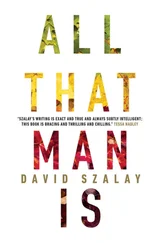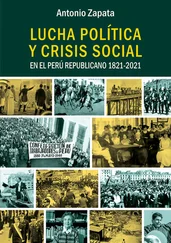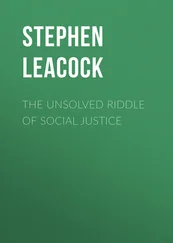While none of these analysis grids (essentialist, structuralist and social constructivist) really provides a definitive answer to the above-mentioned tactics/opportunism debate, it is important to underscore that they are not systematically in contradiction with one another. Actually, they sometimes even overlap, and can be considered more or less valid depending on the conflict situation and the historical context. As noted by Kirby (2012, 800), the context always plays a major role in sexual violence patterns: “The apparent dispute between an account of wartime sexual violence in which all women are targeted and one in which men and women are targeted may tell us more about contingent historical factors (different wars and differing contexts may display different patterns of rape) or analytical distinctions (between acts that are essential to a strategy and those that are peripheral to it) than they do about the philosophical foundations of research”. The sheer complexity and fluidity of conflict patterns seem to preclude monocausal explanations of sexual violence, highlighting the need to mainstream, beyond tactics, opportunism and gender factors, other dimensions such as poverty, collapse of law and order, past uses of wartime sexual violence and so on.
Most of these analyses also share a specific focus on rape as a major form of conflict-related sexual violence. There is, however, to date, no unified theory that consistently explains patterns of wartime rape that are observed at the empirical level (Gottschall 2004). Megan MacKenzie (2010), for instance, looks at how rape has been used as a tool of war and why it has been part of militant strategies throughout history. She argues that because it violates existing patriarchal norms, rape is used to create dis-order and to eventually turn women’s bodies into battlefields. Other authors like Claudia Card (1996) interpret wartime rape as a martial weapon that is related to other types of violence, such as torture and terrorism. A series of authors like Stiglmayer (1993) have more specifically focused on the bonding entailed by wartime rape, and argued that one of its main functions is to produce solidarity and friendship between combatants. Gang rape in particular appears to play an important part in combatant socialization for groups that have recruited their members through forcible means like abduction or pressganging (Cohen 2013). Recent research has also critically examined and challenged the “rape as a weapon of war” thesis, by showing its weak theoretical consistency, as well as the practical difficulties it entails for policy-makers trying to devise adapted responses (Kirby 2012). Eriksson Baaz and Stern (2013, 5) in particular develop an extensive critique of this narrative, arguing that wartime sexual violence can be the result of a carefully planned strategy such as in Bosnia-Herzegovina, or its exact opposite resulting from the breakdown of chains of command and lack of discipline, such as in the DRC. The “weapon of war” thesis thus seems to have a very limited applicability, and is far from providing an overall explanatory grid for wartime rape. Some authors like Buss (2009) have even argued that the idea of rape as a weapon of war erases women’s individual experiences, as well as other types of violence that occur during conflicts, by inserting them in a globalizing narrative.
In spite of their diversity, these various approaches of wartime rape have left pending a series of questions, for instance, how wartime rape relates to other forms of wartime sexual violence, how it is fed by wider socio-economic issues, or how to account for male rape victims. Recent research has indeed highlighted that wartime sexual violence cannot be analysed in isolation from other types of wartime violence such as looting and pillaging (Wood 2006, 322), to which it is undoubtedly connected. But, as explained by Dolan (2010, 60), wartime sexual violence is also related to wider socio-economic and political factors, not just to patterns of violence; in that sense, it functions as an indicator of larger societal issues: “Rather than reading sexual violence simply as a consequence of impunity, we need to understand sexual violence as one, if not the indicator of ongoing, unresolved social and political conflicts, especially where those are technologically simple yet psychologically complex”.
Because it lies at a series of nexuses, conflict-related sexual violence challenges and spills over existing taxonomies of violence: it can be elicited by political, military, social, economic and cultural factors; it can be triggered simultaneously by national and very localized issues; it is both public and private, individual and collective, political and sexual, normalized and extreme, set off by emotions and rational calculations and so on. In many ways, current analysis grids fail to capture this complexity, but also the multiplicity of consequences and suffering it occasions for the collective and the individual. Like other forms of conflict-related violence exerted against civilians, brutalization entailed by sexual violence can only be understood by trying to reconcile these multiple dimensions and levels of analysis, and in particular by paying attention both to micro-contexts of local power, and to larger orders of social force (Kleinman 2000, 127). In the absence of such an in-depth examination, requiring both conceptual instruments and thorough empirical work, current analysis grids can only be found lacking.
One of the most blatant shortcomings of existing theoretical models is that they fail to account for the occurrence of wartime sexual violence against men, to mainstream it in their analysis, not to mention to try to make sense of it. Some of the authors quoted above acknowledge male sexual victimization in footnotes, in two or three hurried sentences, or at the most dedicate a chapter to the issue (Meger 2016). It is as if sexual violence is triggered by different factors when it is committed against women, than when it is perpetrated on men. But is it really the case? Are men sexually victimized in different ways, for instance, in different circumstances, than women? If yes, what can account for these differences? Is rape of men—or castration, or male sexual humiliation, etc.—a “weapon of war”? Or a result of combatants’ opportunistic behavior? Or something else? And if they are triggered by different factors, what is the relationship, if any, between sexual violence against men and sexual violence against women? Or can we assume that male sexual victimization is a sort of sub-category of sexual violence, just because available data indicates that men are less likely to be targeted for sexual violence than women? Before moving on to offer a more general and conceptual discussion on conflict-related sexual violence against men, it is worth having a look at the empirical evidence that has already been gathered on the issue and that provides preliminary answers to some of these questions.
1.2. AN ANCIENT AND WIDESPREAD FEATURE OF CONFLICTS
Instances of sexual violence against men have been documented in a great number of conflicts and wars, both ancient and contemporary. A number of factors have contributed to keep them well hidden from view, though. First, empirical evidence on wartime sexual violence against men is usually not elaborated upon, and much more stress is put on “other” forms of violence of which civilian and combatant men are victims, such as killing, maiming, and, to a lesser extent, imprisonment and torture. [2] Of course, such types of violence can, and indeed do often, include sexual violence, but this is almost never discussed.
Conversely, most published work on wartime sexual violence takes female victims as their unquestionable main if not unique object of analysis, and research on violence perpetrated on women during conflicts focuses primarily on sexual violence. Numbers and statistics about the sexual victimization of men are also difficult to come by, because male survivors tend to hide that they have been victims of such violence. Of course, both male and female survivors of sexual violence tend to underreport it, but there is evidence that male victims report these cases even less than women and girls do (Sivakumaran 2007). In addition, it appears that sexual violence against men is often not coded as sexual violence, but as torture or beatings (see Manivannan 2014, 643; Cohen et al. 2013). For instance, the Peruvian Truth and Reconciliation Commission coded male sexual torture as “torture”, but female sexual torture as “sexual violence”. Leiby (2012, 343) recoded and analysed the original testimonies of Peruvian survivors of sexual violence and found out that 29% of sexual violence victims were men, whereas the truth commission had found that only 2% were men. Finally, it seems reasonable to assume that because patterns of wartime sexual violence against men seem to differ from what we know of conflict-related sexual violence against women, they are not perceived as such. Wartime sexual victimization of women has set the norms for sexual violence more generally, and sexual violence against men does not always fit neatly within these established categories: men are less likely to raped, but are more likely to be victims of sexual mutilation, and of other forms of sexual torture like beatings of the genitals, which are usually not coded or perceived as gender-based or sexual violence.
Читать дальше












